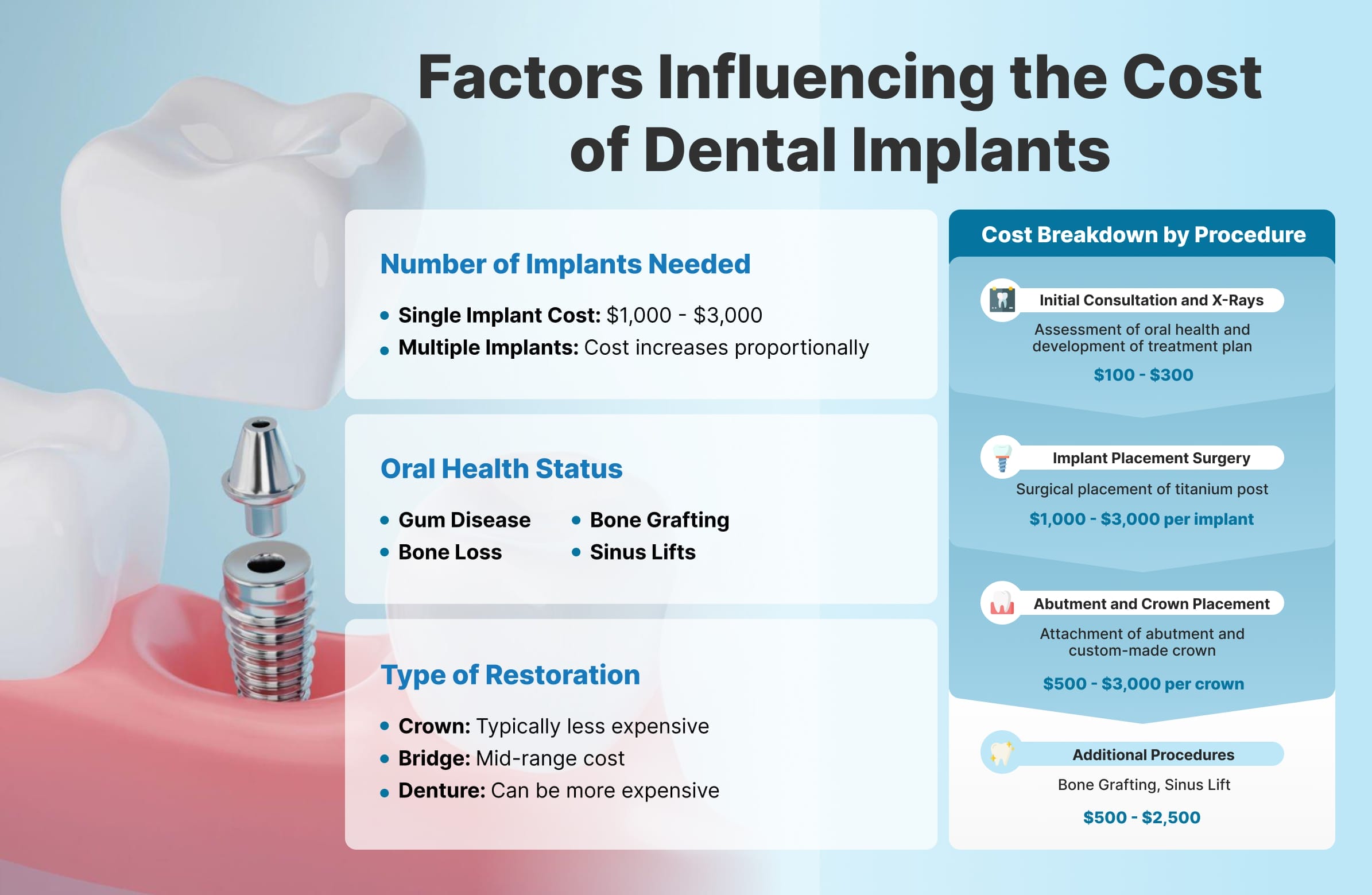See This Report about Dental Sense
See This Report about Dental Sense
Blog Article
The Best Strategy To Use For Dental Sense
Table of ContentsSome Ideas on Dental Sense You Should KnowThe 9-Minute Rule for Dental SenseSome Known Facts About Dental Sense.The 7-Second Trick For Dental Sense
are clinical gadgets operatively dental implanted into the jaw to bring back an individual's capability to chew or their look. They provide support for man-made (fake) teeth, such as crowns, bridges, or dentures. When a tooth is lost because of injury or disease, a person can experience difficulties such as quick bone loss, malfunctioning speech, or changes to chewing patterns that cause discomfort.Dental dental implant systems consist of an oral implant body and dental implant abutment and might likewise consist of an abutment fixation screw. Dental implants. The dental implant body is surgically inserted in the jawbone in place of the tooth's origin. The dental implant abutment is normally affixed to the implant body by the joint addiction screw and extends via gums right into the mouth to support the affixed fabricated teeth
(http://tupalo.com/en/users/8103990)Structure of The Oral Implant System choosing oral implants, speak to your oral provider regarding the potential advantages and threats, and whether you are a prospect for the treatment. Things to think about: Your overall health is an important consider determining whether you are a great prospect for oral implants, exactly how long it will require to recover, and for how long the implant may remain in place.
Cigarette smoking may influence the recovery process and decrease the long-lasting success of the implant. The recovery process for the dental implant body may take numerous months or longer, during which time you usually have a short-term abutment in place of the tooth. the dental implant procedure: Very carefully adhere to the dental hygiene directions provided to you by your dental provider.
Excitement About Dental Sense
Implant failing can lead to the requirement for another surgical procedure to take care of or replace the implant system. Brings back the capacity to eat Brings back cosmetic appearance Aids maintain the jawbone from diminishing because of bone loss Maintains the health of the surrounding bone and gums Assists maintain surrounding (close-by) teeth steady Enhances lifestyle Damage to bordering natural teeth during dental implant positioning Injury to the surrounding tissues during surgical treatment, such as sinus perforation Injury during surgery (as an example, fracture of surrounding jawbone) Insufficient function, such as really feeling like the teeth do not attack with each other generally A sensation that the tooth is loose or twisting in area resulting from an abutment screw loosening up Implant body failing (looseness of the dental implant body) because of systemic infection, which might be more most likely in clients with unchecked diabetes due to neighborhood infection in bone and periodontals sustaining the implant body as a result of delayed recovery, which may be much more likely in individuals who smoke Difficulty cleaning the periodontals around the implant, causing inadequate dental health Neglected periodontal disease Post-surgical tingling due to nerve impingement or damages Constantly inform health treatment carriers and imaging technicians that you have oral implants prior to any magnetic vibration imaging (MRI) or x-ray treatments.
FDA is not conscious of any type of unfavorable events reported for MRI or x-ray procedures with oral implants. Dental implants systems are commonly made from products that follow global agreement criteria of the International Organization for Standardization (ISO) or ASTM International. These criteria have details of what makes a safe product.

An oral implant is a framework that changes a missing tooth. With screw-like devices, the surgeon inserts a dental implant right into the jawbone, and it acts as an anchor for a synthetic tooth, called a crown.
Dental Sense Things To Know Before You Buy
Some people are not qualified for dental implant surgical procedure. It is for dental cosmetic surgeons to operate individuals with: severe illnessuncontrollable metabolic diseasebone or soft tissue illness or infectionIf these concerns are resolved, a person can have the surgical treatment. In, oral specialists refrain from running on people with: If people with any one of the above undertake oral implant surgical treatment, there is a higher danger of the dental implant falling short.

Oral implant surgical treatment is a customized procedure. It's not the very same for everybody. The following offers a general summary of what you can expect your dentist, oral specialist, periodontist or prosthodontist to do: Put the implant surgically. Provide you time to recover. Connect the post and last crown, bridge or denture.
Next, your surgeon will thoroughly put the oral implant into your jaw. If your implant is near the front of your mouth, your dental professional will certainly make a temporary tooth for you to wear up until you recover.
Not known Details About Dental Sense
During the healing phase, your jawbone ought to fuse to the dental implant. This procedure can take anywhere from 3 to 9 months.
Once your implant heals, your dental expert can affix the joint (little connector post) and your last reconstruction (crown, bridge or denture). This usually takes concerning one hour to finish and may call for a 2nd small surgical procedure. You should not really feel any discomfort during your dental implant treatment due to the fact that your service provider will use medication to numb your gum tissues.
Report this page